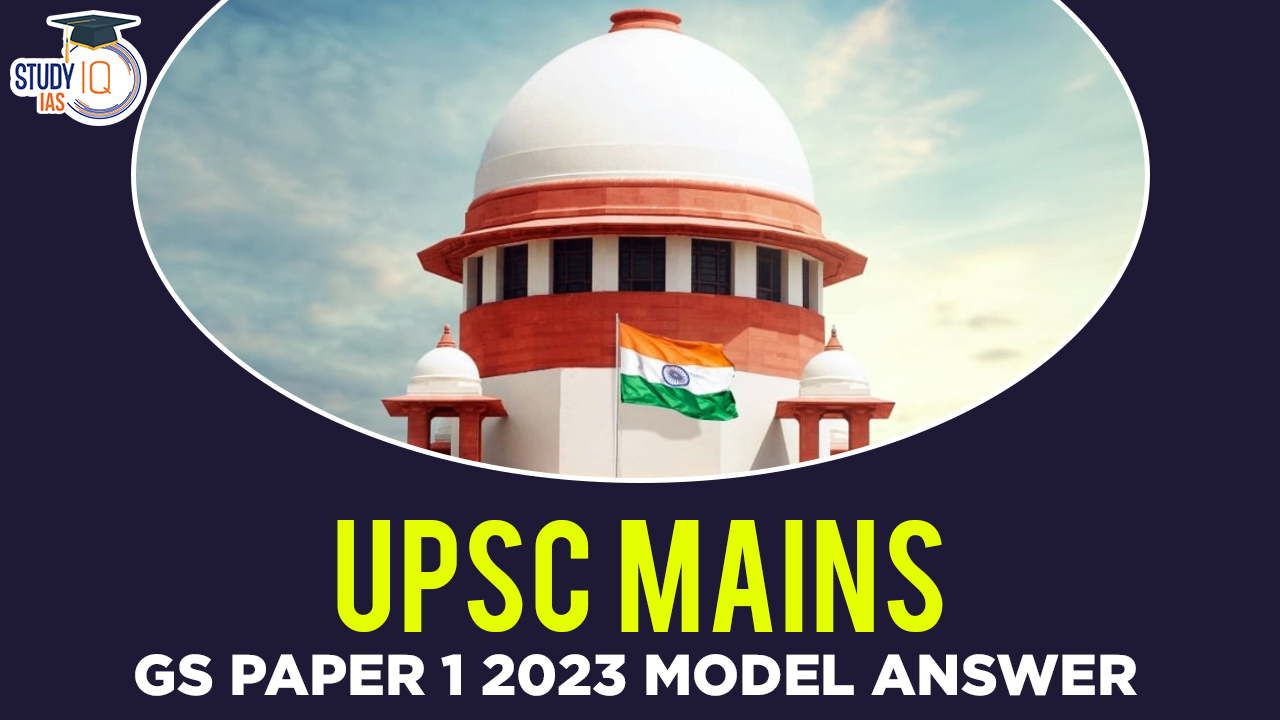Q19. Why is caste identity in India both static and fluid? (15m)- Society
भारत में जातीय अस्मिता गतिशील और स्थिर दोनों ही क्यों है?
Introduction:
Caste are social groupings or segments the membership of which is acquired and fixed by birth.
Identity refers to the fact of being who a person is. Caste identity make a person to identify herself based on her caste.
Caste identity in India is static due to:
- Segmental division of society: Caste is a social grouping, the identity of which is acquired and fixed by birth.
-
-
- Ex.- Kshatriya as a caste identity.
-
- Hierarchy: Hierarchy is a scheme of arranging castes in terms of so-called superior and inferior positions in relation to each other.
-
-
- Ex.- Ayyengar Brahmins consider themselves superior to Ayyer Brahmins in Tamil Nadu.
-
- Restrictions on feeding and social intercourse: Based on caste identity, Dalit cooks often are boycotted for Mid Day Meal programs by so-called caste custodians.
-
-
- Ex- A woman Dalit cook was reinstated to service by District Magistrate Kanwal Tanuj in MH.
-
- Civil and religious disabilities and privileges of different sections: So-called upper castes invariably never face discrimination while renting a home in any part of India.
- Lack of unrestricted choice of occupation: Bezwada Wilson complains that Dalits would involuntarily find themselves engaged in the night soil scavenging work.
- Restrictions on marriage: Caste-identity-based endogamous marriages are still the norm.
-
- Ex.- Sunday Matrimonial advertisements in The Hindu.
Caste identity in India is increasingly becoming fluid due to:
- Sanskritization: The so-called lower castes have adopted the rites, rituals, customs, and way of living of the so-called upper castes.
-
-
- Ex.- Dalit capitalism.
-
- Dissociation between caste and occupation: No longer one can deduce a person’s caste by her occupation.
- Ex.- A person working in a shoe shop may not be a cobbler by caste.
- Changes in caste identity: From ascriptive to achieved. Today, individuals identify themselves on the basis of Educational qualification, occupational position, income etc.
- Weakening of rules of purity and pollution: Seen in the inter-caste marriages taking place.
-
-
- Ex.- MP government promoting Inter-caste marriages.
-
- Emergence of caste organizations: Dominant castes like Jats and Patidars claiming OBC status.
- Process of democratization: Political organizations catering to multiple castes/sections of society.
- Ex.- BAMCEF and BSP.
Conclusion:
Thus, the caste identities are static as well as fluid for the gratification of contemporary needs
Check out the UPSC Mains GS Paper 1 2023 Analysis with detailed expatiation of the topics of Mains GS Paper 1 By the Study IQ Experts.


 UPSC CMS Admit Card 2025 Out: Download L...
UPSC CMS Admit Card 2025 Out: Download L...
 UPSC Study Material for Prelims & Ma...
UPSC Study Material for Prelims & Ma...
 NATO Countries List 2025, Members, Funct...
NATO Countries List 2025, Members, Funct...





















